JAMDANI

(6 Minutes read)
The tradition of weaving fine cotton in this region goes back thousands of years. The reference of the Dhakai Muslin is legendary throughout many historic texts and travel documents. Under the patronage of the Mughals it reached its highest popularity and supreme quality. The underlying reason for this legendary textile is the availability of the best quality cotton grown in this region. The glory of the muslin may have faded away but a type of muslin is still produced today by the weavers of the same region, the ‘loom figured muslin’ or Jamdani.
Jamdani is a derivative from the Muslin. It is undoubtedly the most renowned of all the hand woven textiles from Bangladesh. Traditionally, Jamdani is a fine woven cotton with flowering patterns. The weave of the fabric is of a plain warp and weft with a very fine yarn and with an additional weft thread the patterns are created very skillfully on the fabric. The additional thread is of a heavier quality that makes the patterns appear to be floating on the fine woven surface of the textile.
The most exquisite feature of the Jamdani is the marvel of the intricate patterns, which is said to have originated from Persian motifs. The motifs are all inspired from nature. The names and the patterns have transformed a lot over the centuries and have been localized. A wide variety of names of local flowers and plants are used to describe the array of patterns used on the Jamdani today.

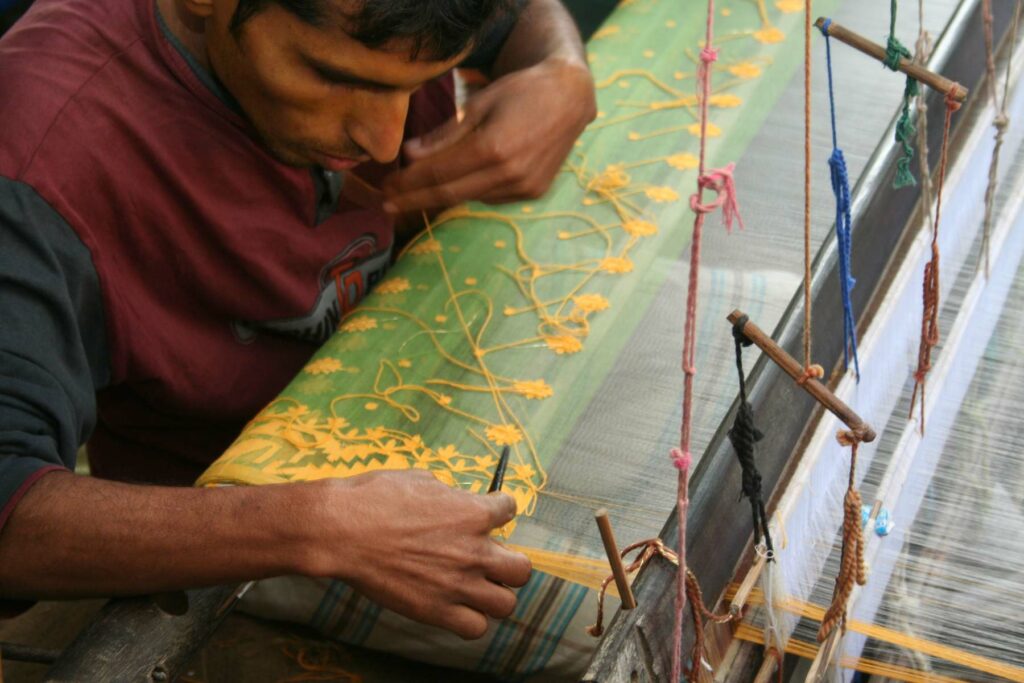
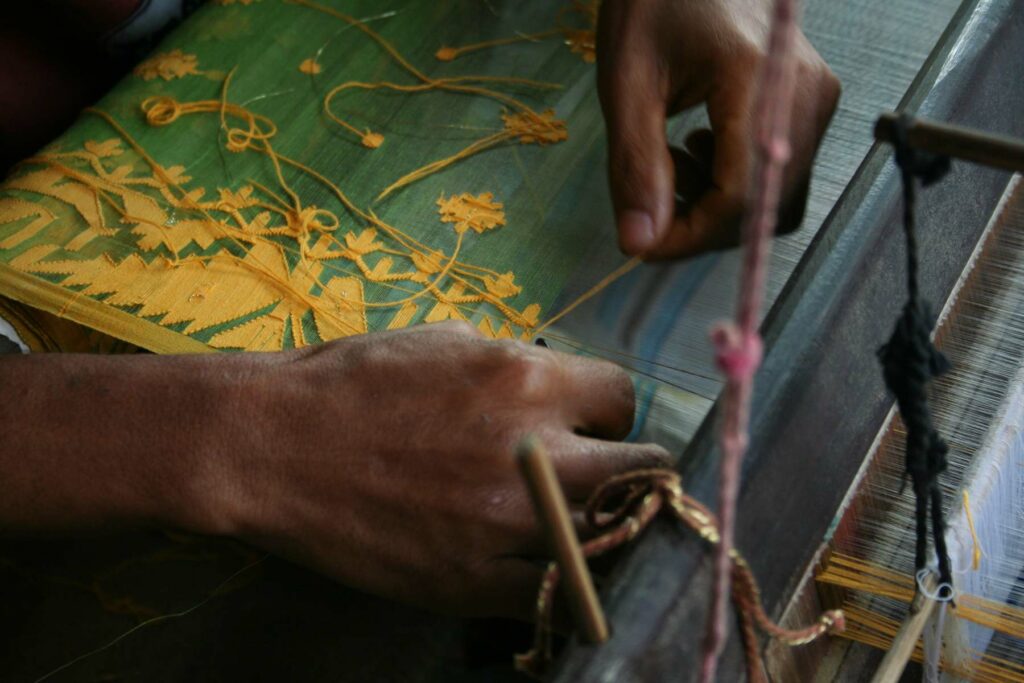
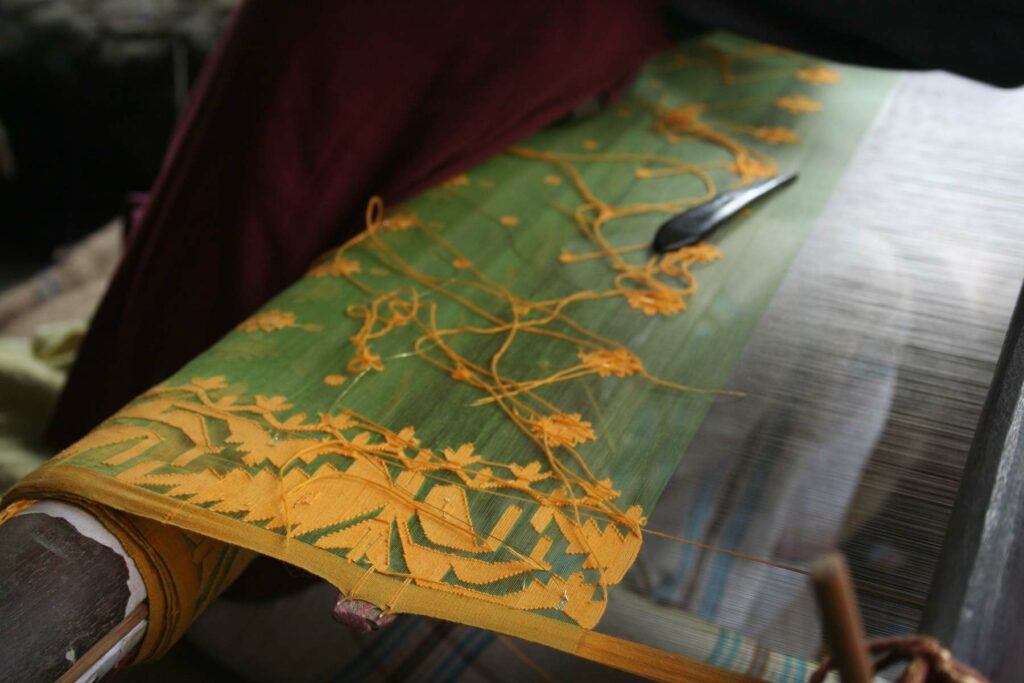
The way the designs are executed and taught is also very unique for Jamdani. There are no written or documented designs to visually follow while weaving. The patterns are recited like poetry as two weavers sit side by side and one leads the way. The master weaver sitting on the right side recites the “buli” or the words for explaining a particular pattern. By inserting the additional weft yarn with the help of a small tool, the patterns emerge on the fabric. The mastery of the weaver is determined by his ability to conceal the ends of the extra weft thread within the motif itself. Through memorization and recitation- the designs are taught from generation to generation. The weavers have to remember the designs with mathematical accuracy and calculation to execute each motif correctly.
With time the motifs and the overall look of the Jamdani in its appearance altered substantially. The price constraint has to play a vital role in this. Producing high quality and high count thread and fine weave is very time consuming and hence expensive to produce. As a result, the Jamdani today appears to be more geometric and with bolder patterns than in the past.
The space division in a Jamdani saree has three main parts, the body, the borders and the end also known as ‘aachol”. There are mainly three types of patterns that are woven on the body of the Jamdani. Jamdani is typically woven as the length of a saree, which is about six yards. Within the six yards the last yard is considered the end of the saree called “aachol” and this part is the most elaborate and intricately woven. There are borders on both sides on the warp. The body of the Jamdani can be of “butidaar” or scattered dott like patterns, or ‘Terchi’ an angular vine pattern that goes across the body and the “jaal’ or intricate net-like pattern that covers the body of the fabric.


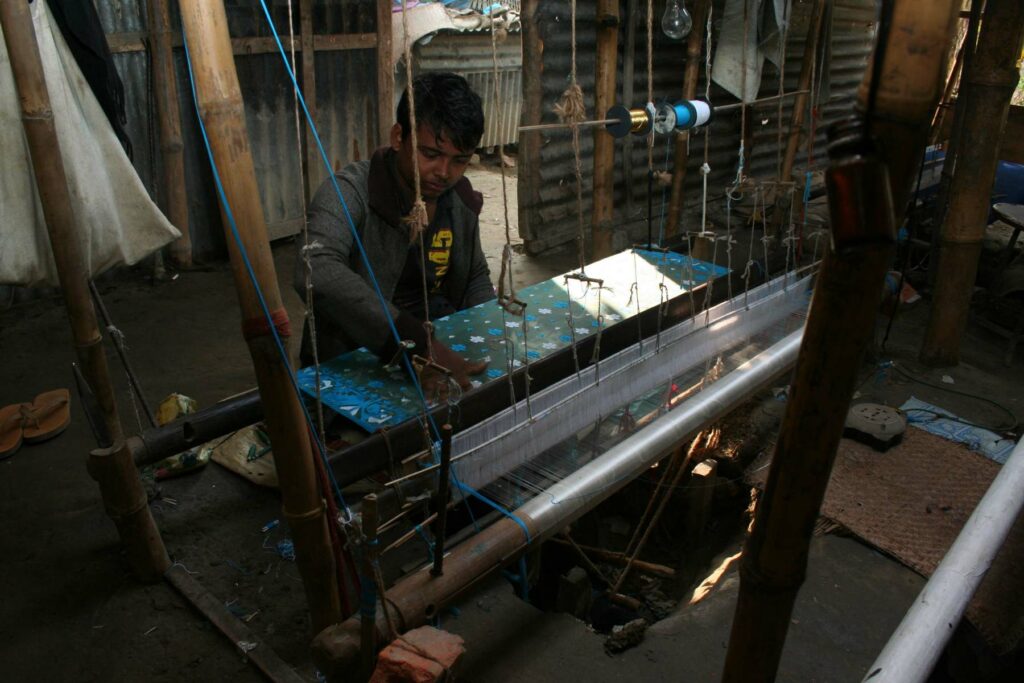
Jamdani is woven on a pit loom traditionally set on the ground. The women do most of the yarn processing while the weaving is done exclusively by men. Starting with the spinning of the yarns to final weaving- there are more than two dozens of steps for weaving the Jamdani. That’s why it is considered to be one of the most labor-intensive hand weaving techniques in the world. Traditionally, hand spun cotton yarn is used for both the warp and the weft. But nowadays silk is also used to weave Jamdani.
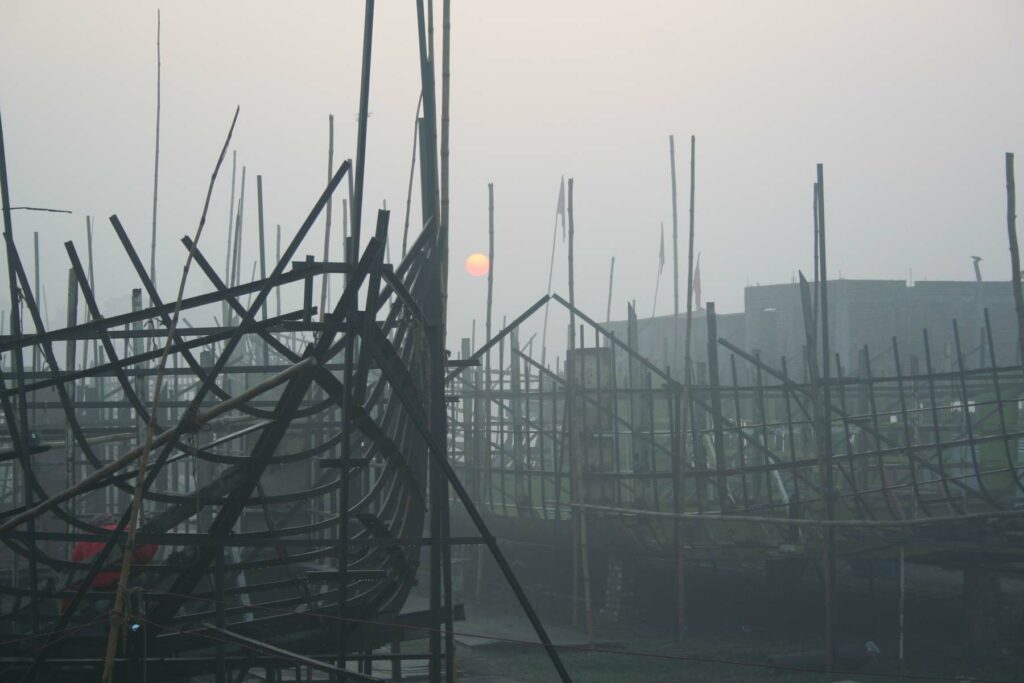
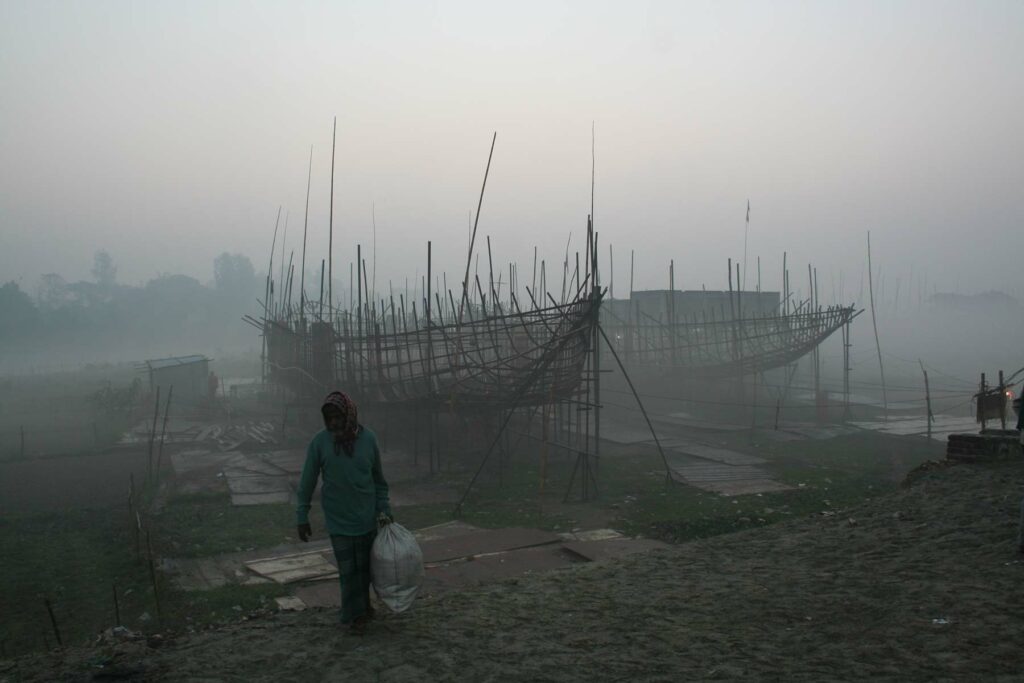


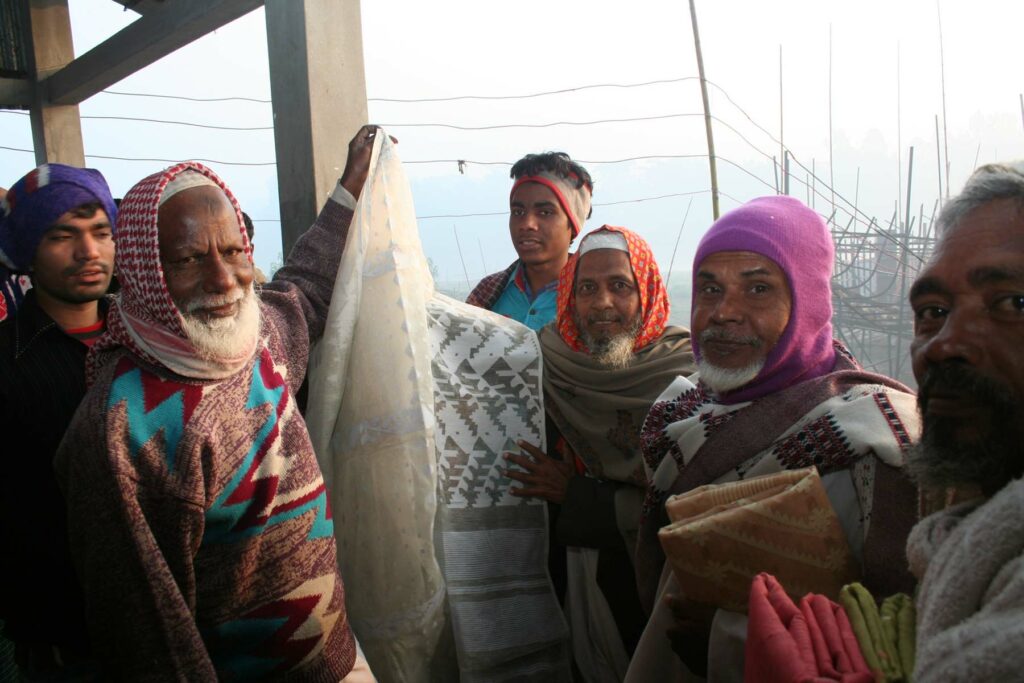
The buying and selling of the Jamdani is done at a localized weekly market, known as a “Jamdani Haat”. At the crack of dawn the weavers gather in groups with their bundles of sellable items. One very interesting feature of the Jamdani ‘haat’ is that unlike conventional markets, here the Buyers are stationary on their designated spots while the sellers go in rounds with their items on offer.
amdani sarees are handed down as heirlooms from mother to daughter. Because of the very fine nature of the fabric, the jamdani needs a lot of care. It needs to be stored carefully away in a cool, dry place; away from the damages from insects and molds. It needs to be aerated and kept under the sun occasionally. On national days and traditional social events the Bengali women lovingly wear Jamdanis. It is considered one of the most valuable possessions in one’s wardrobe.